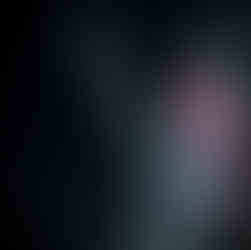CAPTURING THE MILKY WAY
- Forest Junkie

- Mar 7, 2024
- 4 min read
Updated: Dec 19, 2024
Where: All of Sweden
When: March to October
What: Capturing the Milky Way
Here in Sweden, there is little light pollution, which makes the night super interesting. It’s exciting to go out in the dark, as you often encounter wildlife and the stars are incredibly visible. So, I thought it would be really cool to spot and capture the Milky Way. It’s not something I usually do, but definitely fun to experiment with. Let me take you along on my little adventure.
WHAT IS THE MILKY WAY?
The Milky Way is the galaxy where our Earth, along with its solar system, is located. It contains about 200 to 400 billion stars. Earth is roughly halfway between the center (a big black hole) and the edge of the Milky Way. When it's dark enough, we can see the Milky Way as a glowing band in the sky.

HOW TO FIND THE MILKY WAY?
The Milky Way is visible all year round, no matter where you are on Earth. But as our planet rotates, the Milky Way galaxy also moves across the sky. Its core, the brightest and most spectacular part, can sometimes disappear from our view. From the northern hemisphere, where we are, the core is visible from March to October.
A Google search tells me that here in Sweden, in March, you can see the brightest parts of the Milky Way early in the morning. I also consider the phase of the moon. A full moon gives off a lot of light, making the Milky Way less visible. Preferably we'd have a waxing or waning crescent. With this information I plan to go on this adventure between March 1 and 6, it should be best visible around 4:00 am then. I use the Planets app to locate the exact position of the galaxy. This app is also great for checking out other celestial bodies.
EXPLORING LOCATIONS
It’s important to choose a dark location, preferably with a clear, open view and something interesting that can be placed in the foreground of the photo. For this, I just check the satellite map of the area on Google Maps. Another useful tool is a light pollution map. Of course, there shouldn’t be too much cloud cover either. So, we really need some luck here.
I plan to go to the area of Tidö and Strömsholm near Västerås, there should be a bit less light pollution. When there I'll see what my best options are. To make it not too hard for this first experience, the element in the foreground will be the silhouette of some trees (I’m a Forest Junkie, right?).

GEAR
I don’t have the best gear for astrophotography, but I use what I have. A Panasonic GH5 camera with a Samyang 12mm wide-angle lens (24mm for my micro 4/3 camera). I will put the aperture at te lowest number (that will be f 2 on my lens), manually focus to infinity and vary the ISO between 1600 and 3200.
Then the 500 rule must be applied to determine the exposure time, so I won’t get star trails. This means: 500 ÷ Lens Focal Length = Exposure Time. Since this is a micro 4/3 camera, I have to double the focal length to compensate for the crop factor. So, for the 12mm lens, it will be 250 ÷ 12 = 20 seconds. A solid tripod and a cable release are great to prevent unwanted movements. I think we're ready, now we have to wait for the perfect conditions...
CAPTURING THE MILKY WAY
That wait felt like forever... the whole week was completely overcast. I was almost giving up hope when a clear sky was forecasted for the night of March 6th to 7th. Eureka! I got all my gear ready, and after a power nap, I drove to the location around 3 am. A drive in the pitch-black darkness is always exciting and intense here in Sweden, with the possibility of wildlife crossing the road. But this time, the road was quiet.
Upon arrival, I quickly set up the camera on the tripod and used the Planets app to locate the Milky Way, which works great. Because your eyes need some time to adjust to the absence of light, you don't see much at first. After a while, I mainly see a cluster of stars. The nebula isn't really visible to the naked eye now. This might be because the moon is already a quarter visible tonight, radiating a bit too much light already.
I'm glad I did all the research and settings beforehand. In the dark, it's tricky to see everything on the camera, and it's cold. So cold that after a while, I can barely adjust my tripod's height because it's frozen, haha. The first photo I take is a hit. Success! Good preparation pays off :-) There's definitely room for improvement though. Night photography takes practice, the moon phase isn't ideal, and neither is the location, but oh, am I happy! I've learned from this and will definitely try again at another spot and with less moon.

As you can see, capturing the Milky Way requires some preparation and practice. But if you put in some time and effort, you’ll have an amazing experience while everyone else is sleeping.
HELPFUL LINKS
Planets App in App Store:
Planets App in Google Play:
Light pollution map:
Moonfases:
Explanation 500 rule:
Follow me on Instagram for the latest photography adventures:








Comments